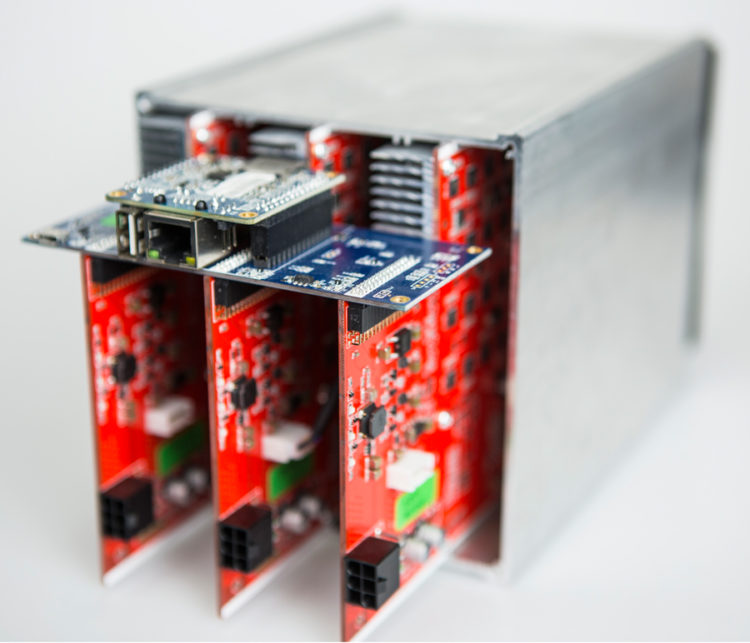
The Impact of Baikal Miner and the Evolution of ASIC Mining
Among the many players in this field, Baikal Miner has distinguished itself by pioneering advancements in application-specific integrated circuit (ASIC) miners. Their flagship product, the Baikal Giant-N, was revolutionary as it was the first ASIC miner to efficiently support both the Cryptonight and Cryptonight-light algorithms. This innovation marked a significant step forward in making cryptocurrency mining not only more accessible but also more efficient for individuals and small miners.
One of the standout features of the Baikal Giant-N is its remarkable processing power. It operates at a speed of 20-40 KH/s while consuming only 60 watts of electricity. This is a notable improvement compared to traditional graphics processing units (GPUs), which have struggled to keep up with these ASIC miners. For example, AMD’s VEGA series GPUs often only achieve a meager 2 KH/s, making them far less efficient for mining operations. The efficiency offered by the Baikal Giant-N is particularly attractive for those who wish to engage in cryptocurrency mining without incurring high energy costs.
The introduction of the Baikal Giant-N also highlights a broader trend in the cryptocurrency mining industry. As the demand for cryptocurrency grows, so does the need for faster and more efficient mining hardware. ASIC miners like the Baikal Giant-N are designed specifically for mining and therefore outperform standard GPUs, which are more versatile but less effective in this particular application. This focus on optimization is essential in a competitive environment where maximizing profit margins can depend heavily on operational efficiencies.
as the landscape of cryptocurrency evolved, many coins have moved away from CryptoNight or have ceased to exist altogether. This has rendered the Baikal Giant-N mostly obsolete and unprofitable for many miners today.
Initially launched to mine various cryptocurrencies that employed the CryptoNight algorithm, the Baikal Giant-N provided miners with a way to earn digital currency relatively easily. However, the rapid changes in the cryptocurrency market have left many of these coins struggling for relevance. For instance, major coins like Monero, which originally utilized CryptoNight, have made significant adjustments to their mining algorithms to combat issues such as centralization and to enhance security. As a result, miners with hardware like the Baikal Giant-N find it difficult to efficiently mine newer versions of these currencies.
Given this evolution, we see that the Baikal Giant-N is not just outdated but also unprofitable for modern mining tasks. The profitability of cryptocurrency mining largely depends on factors such as power consumption, mining difficulty, and the value of the coins being mined. Since most CryptoNight-based coins have either transitioned to different algorithms or have become less valuable, using the Baikal Giant-N for mining tasks is no longer viable for most individuals seeking to invest in cryptocurrency.
Despite its obsolescence for mainstream mining, the Baikal Giant-N still has its place within niche markets. Collectors of cryptocurrency hardware view the Baikal Giant-N as a piece of history from the early days of ASIC mining. Its significance during the ASIC wars, where hardware was pivotal in determining the profitability of mining operations, has made it a collectible item. Thus, while it may not be practical for current mining needs, it still holds value for those interested in the history of cryptocurrency technology.
The Decline of Profitability in Mining Rigs
Profitability in cryptocurrency mining largely depends on two key factors: the market value of the cryptocurrency being mined and the costs associated with running the mining hardware. Initially, the Giant N was profitable because it operated efficiently, and the market prices of cryptocurrencies were high. Miners could earn significant amounts of money. However, as the market evolved, the prices of many cryptocurrencies began to fluctuate dramatically, leading to decreased profitability for mining operations.
Additionally, one of the most pressing concerns for miners today is the cost of electricity. Mining rigs require a substantial amount of energy to operate, and electricity costs can quickly eat into any potential profits. For instance, recent estimates suggest that the annual earnings from the Giant N may amount to as little as $5. 39. This figure is starkly low and highlights that for many users, the rig has become more of a hobbyist’s toy rather than a serious investment. With average residential electricity rates, maintaining the Giant N can result in a net loss due to the minimal earnings it generates.
The mining landscape has become increasingly competitive. As more individuals and companies invest in mining operations, the difficulty of mining increases, meaning that the rewards are shared among more participants. This competition makes it harder for older models like the Giant N to remain profitable. Newer, more efficient mining rigs have flooded the market, allowing their owners to mine more cryptocurrency in less time and at lower energy costs, further diminishing the chances of profitability for older machines.
As we move into the present, the legacy of the Baikal BK-N is a mix of technological advancement and obsolescence. While the BK-N was suitable for mining specific forks of the CryptoNight algorithm, the rapid evolution of cryptocurrency technology has rendered it outdated for mainstream mining profitability. The mining landscape has significantly shifted, with newer and more efficient ASICs entering the market, which utilize different algorithms. Furthermore, many cryptocurrencies have continued to evolve, transitioning to new protocols that further mitigate the advantages of ASIC miners.
Today, while the Baikal BK-N may still find a place in smaller or niche CryptoNight forks, its practical application in the broader cryptocurrency ecosystem is limited. The competition among miners has intensified, and profitability is now dictated by more advanced mining devices and algorithms that the BK-N cannot compete against. This evolution serves as a reminder of the fast-paced nature of technology in the crypto space, where innovations can quickly render earlier advancements obsolete.
Summary of the Baikal Giant N Specifications :
Baikal released the Giant N, AKA BK-N in March 2018
Chip boards : 3
Fans : 1
PSU Cables : 3 * 6 pins ( ATX Power )
Network Type : Ethernet
Operating Temperature : 40 °C
Weight : 1.8 kg
Noise level : 60 db

Baikal Giant N Mining Hashrate :
- Cryptonight [ Monero (XMR) & DigitalNote (XDN) & Bytecoin & Electroneum & Graftcoin & IPBCcoin & SUMOKOIN ] Mining Hashrate : 20 kH/s
- Cryptonight-Lite (Aeon) Mining Hashrate : 40 kH/s
Power Consumption : 60 Watts/Per Hour
Power Efficiency :
- Cryptonight : 3 j/kh
- Cryptonight-Lite : 1.5 j/kh
Update :
- CryptoNight has been Forked into a new version called CryptoNightV7
- CryptoNightV7 is Asic Miners Resistant
- Baikal Giant N CryptoNightV7 Mining Hashrate Latest Update




